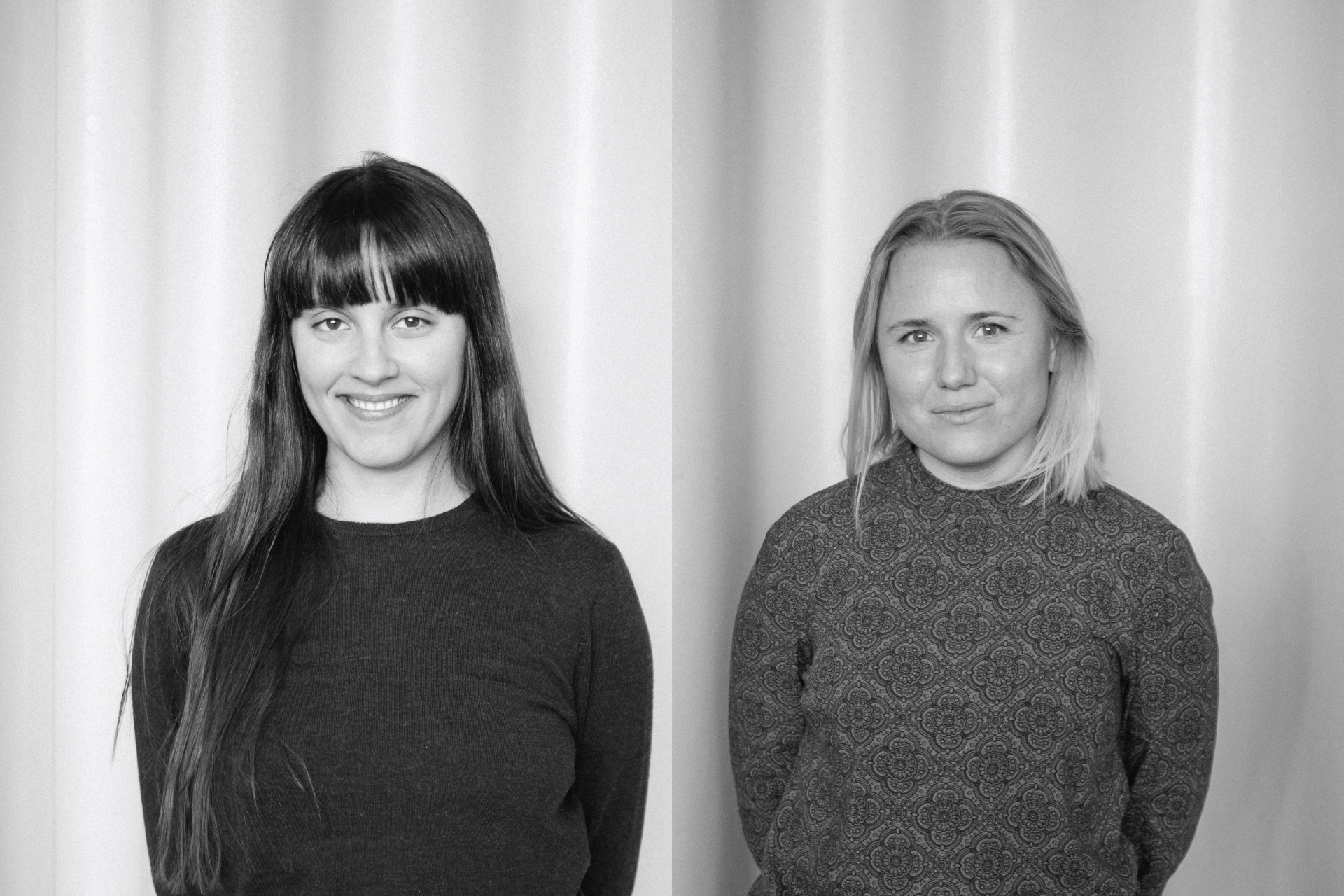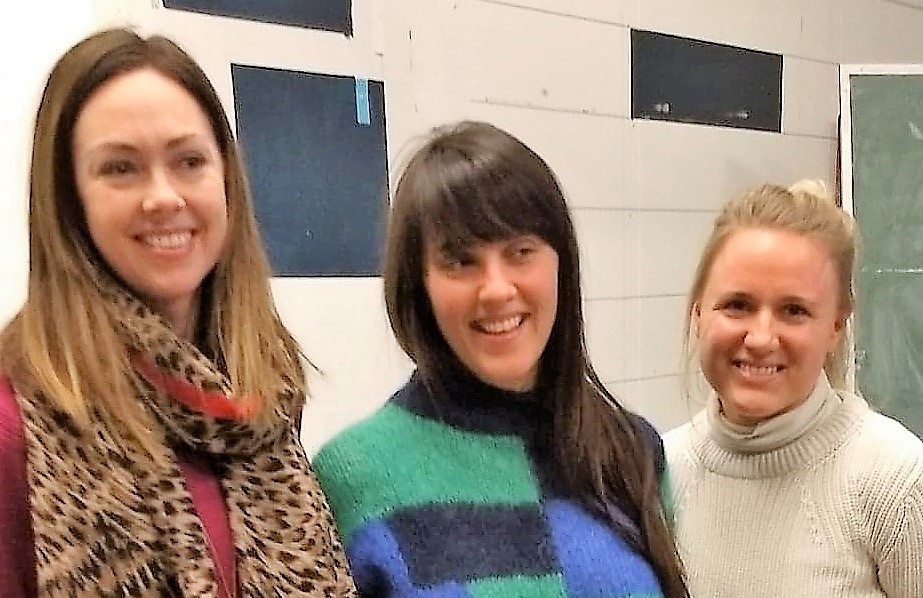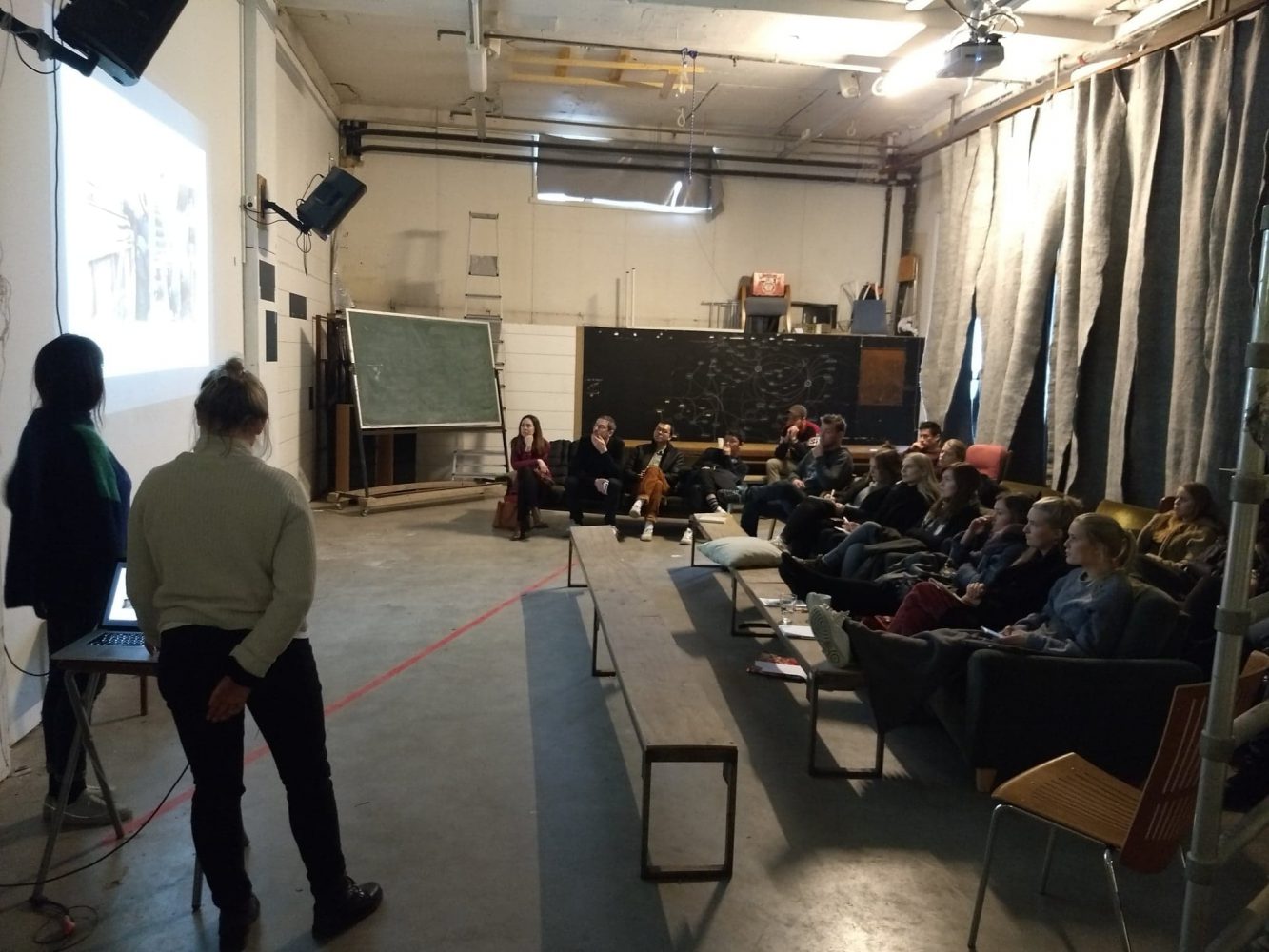Nikolina Søgnen and Ida Wressel are winners of Statsbygg Student Award 2019

20. November 2019 Statsbygg handed out their Student Award 2019 at BAS. This year, Statsbygg decided to give the prize to Nikolina Søgnen and Ida Wressel for their diploma project“Barking up the Right Tree”
Representative from Statsbygg’s Western Region Kristin Vollen gave the check of NOK 20.000,- to the winners.
«Statsbygg wishes to encourage innovative and experimental studies of architecture among future generations of architects. The Student Award will be handed out to one or more student projects at the master level for particularly innovative and well executed project work performed in accordance with state guidelines within the field of architecture. In the evaluation, emphasis is placed on clarity in quality and form, in terms of identity, practical usefulness and aesthetic value».


The three projects that were competing for the award this year were:
- Ingrid Jordheim: “Home”
- Ragnhild Våge: “Bodology: The Anatomy of Storage Space”
- Nikolina Søgnen and Ida Wressel: «Barking up the right tree».
Here you can read the jury’s comments on the three projects:
«Barking up the right tree» by Nikolina Søgnen and Ida Wressel : This thesis investigate the potential of an optimal value chain by local production and distribution of timber as building material. Traditionally this was the case with Norway’s long history of high wood building competence, but is now is being forgotten. In barking up the right tree, Ida Wressel and Nikolina Søgnen expose the many qualities of “relocalizing” and further develop the wood industry. With this concept we can reduce transportation, increase specialization, add identity and better use of quality, to make Norwegian forestry better compete with the marked. The idea is that we need to keep and restore local knowledge and communication to get a better collaboration throughout the process of growing trees to building houses, and that this will increase quality in the building business and economic growth in the community. This opens a better opportunity of matching offer and demand.
The jury adore the concept of giving Norwegian forestry a new value. We are amazed at the initiative to partake in a similar local concept in Austria to be inspired and learn. The strategy is demonstrated with a 10 hectare spruce plantation and a beautiful wood academy along Bergensbanen at Voss, where the traditions of forestry are still most vital. The academy is nicely designed and adjusted for a flexible and social use,( with facilities for wood refinement following the lifespan of the cultured neighboring forest, designed as a meeting place where skilled people such as saw millers, craftsmen, foresters and academics, can educate themselves and each other and providing Voss with much needed space for drying of wood). Also there is a hiking route that take visitors from the splendidly designed bus stop and through the academy, through different forest spaces and to several remnants of historic use of the forest.
‘Bodology: The Anatomy of Storage Space’ by Ragnhild Thorset Våge: Bodology is a thorough study of storage space with empirical, cognitive and philosophical approaches. Ragnhild has researched most of what you can associate with storage space: from historical and cultural traditions and shifts, a great range of material experimentation connected to philosophical and psychological theories. The relation between storage and imagination as a mode of being was a central motivation in writing this thesis. The conceptual and material aspects fulfill each other by intelligently creating a physical space as a method to demonstrate existence. The volume and the material in the brain affect the mind and vice versa. This is a peculiar, but effective argument of the potential of the human mind, Our creations do not appear from nothing, but are based on existing material; we need conceptual and/or physical space to feed imagination, which proves why a bod is an important aspect in people’s lives. Ragnhild has produced an original and innovative staging of various models and drawings, together operating as a coherent storage exhibition and model for conceptualizing thought. The personal yet universal aspects of this thesis have had the jury smitten; the student has achieved a high level of knowledge and reflection and are able to give boden a functional, cultural, historical, personal, philosophical and creative value that convince us that having a bod is more important than we could imagine.
«Home» by Ingrid Jordheim: This candidate has dived into an ever so important contemporary subject of quality housing, which is shaping society and urban development. In the analysis the student confidently point out how the building regulations has shaped building development that gives increase and decrease in living standards from the late 1800 up to date, documented by visual examples. There are relevant studies concerning how we define quality, critically viewing a business that is dominated by profit since the 70’s. From this, Ingrid moves forward by creating an infill building project on a selected property in Oslo. The concept is to accommodate for essential living qualities in sustainable and space efficient solutions.
There are good coherence between analysis, findings and interpretations of technical, aesthetics, human and function in the projected material. The visualizations are neat and direct and show a good special understanding and ability to adapt plans to attend the human aspect very successfully, further proved in a thoroughly constructed model. This is a good foundation for achieving high living standards. In general a solid project.
Statsbygg is the Norwegian government’s key advisor in construction and property affairs, building commissioner, property manager and property developer. Statsbygg is a public sector administration company responsible to the Ministry of Government Administration, Reform and Church Affairs, Statsbygg provides appropriate, functional premises to public sector enterprises, as well as realising prevailing sociopolitical objectives in relation to architecture, governmental planning interests, preservation of heritage sites and the environment.

